 Some original and rare Mitchell mirrors are still surviving today and can be found in some pubs in and around Belfast today
Some original and rare Mitchell mirrors are still surviving today and can be found in some pubs in and around Belfast today
 Some other examples of Mitchell Mirrors which were mass produced for advertising their products
Some other examples of Mitchell Mirrors which were mass produced for advertising their products




The Dublin-born painter Richard Moynan was 24 years old at the commencement of his artistic training. He was educated with a view to entering the medical profession and proceeded so far on the course to need only his final examination to qualify, but his artistic instincts proved to be too strong to be resisted, and he abandoned the profession of medicine for that of art, and made it his life long study. (The Irish Times, 11 April 1906, p. 5.) Moynan entered the Dublin Metropolitan School of Art (DMSA) in January 1880, having initially studied there on a part-time basis. Due to an Act of Parliament passed in 1877 the school came under the control of the Department of Science and Art of South Kensington, which aligned it with the British art education system. The headmaster, Robert Edwin Lyne, was a product of this education as he had received his instruction in the (British) National Training School prior to taking up his appointment in Dublin in 1863. In the DMSA, Moynan gained the requisite qualifications in 'Freehand, Geometry, Perspective and Object Drawing, 2nd grade' (Thoms, 1891, p. 833), which allowed him entry to the Royal Hibernian Academy Schools in 1882. The following July he was awarded the 'Albert Scholarship for the best picture shown in the Academy by a student' (Strickland, Vol II, 1913, p. 144). This enabled the artist to continue his studies in Académie Royale des Beaux Arts in Antwerp, moving on to Paris in 1885, where he honed his skills in portraiture at Académie Julian. Moynan returned to his native Dublin in December 1886 to establish a practice as a portrait painter, but he also pursued his craft in terms of genre scenes, history painting and literary subjects. The painting, Military Manoeuvres (1891), marks a watershed in the artist's development. It demonstrates his art-making process and provides an insight into his political beliefs.










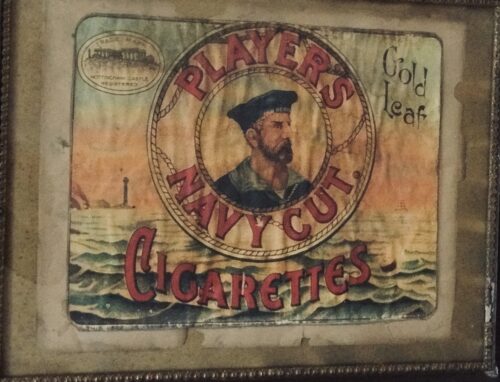


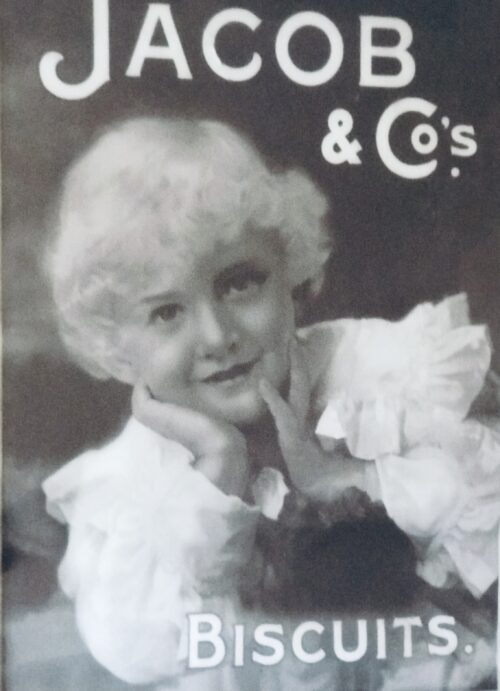
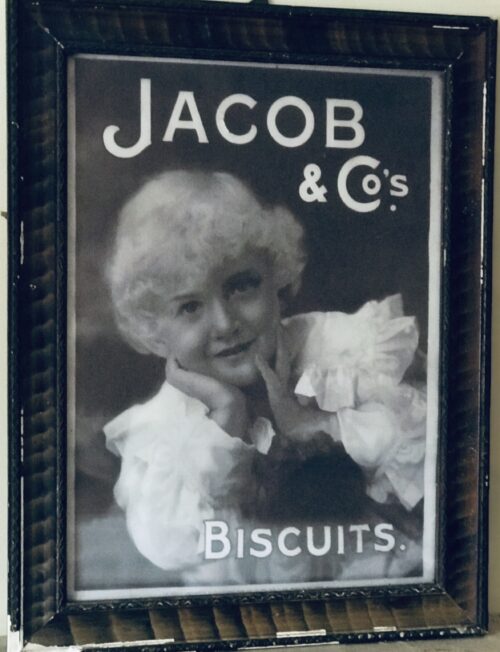
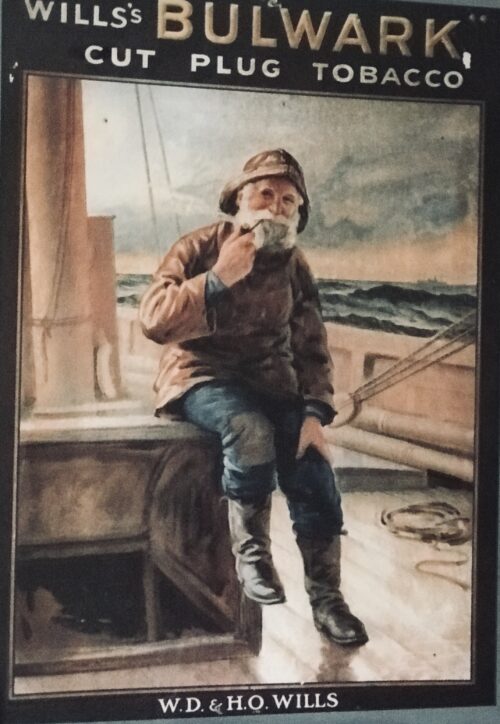
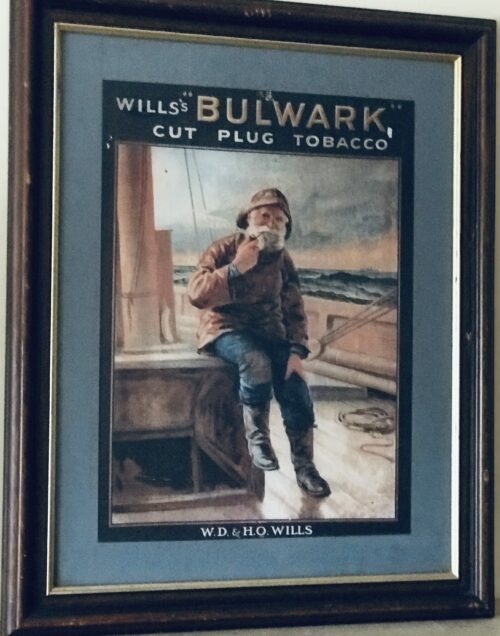





| Pos. | Player | Team | Appearances | Rationale |
|---|---|---|---|---|
| GK | Kilkenny | 2 | "For his courageous defiance, his agility and trustworthiness making him the kind of goalkeeper that any player would be happy to have behind him." | |
| RCB | Kilkenny | 1 | "For his dependability in defence, which combines with his natural hurling skill to establish him as one of the great corner backs of today." | |
| FB | Limerick | 3 | "For his undiminished skill and dependability in a very demanding position where quite often brawn is substituted for hurling artistry." | |
| LCB | Limerick | 1 | "For his rare bravery and mobility: for the all-round splender of his contribution to Limerick's much-delayed return to championship honours." | |
| RWB | Wexford | 1 | "For his alertness and sense of judgement, for the crispness of his stroke which played such a sizeable part in regaining the National League title for his county." | |
| CB | Kilkenny | 1 | "For his sheer skill and obstinacy in defence, his tenacious approach and the devotion he continues to give to the game." | |
| LWB | Limerick | 1 | "For the fervour he brings to all facets of hurling, and particularly for his dedicated half-back play which contributed so much to Limerick's 1973 successes." | |
| MD | Kilkenny | 1 | "For his artistic stick-work which he has demonstrated with increasing regularity, and for establishing himself as one of the most elegant and energetic midfielders of recent times." | |
| MD | Limerick | 1 | "For the level-headedness he has so frequently shown in the tightest of situations and for his exceptionally high rate of scoring." | |
| RWF | Tipperary | 3 | "For his incisive intelligent running which so often splits opposing defences: for the remarkable consistency and accuracy of his marksmanship." | |
| CF | Kilkenny | 2 | "For highlighting just how vigorous play can be totally fair, particularly during his famous attacks towards the opposing goal." | |
| LWF | Limerick | 1 | "For his seemingly limitless energy and his desire to work all over the field: qualities which have made him a natural leader and a high scorer." | |
| RCF | Wexford | 1 | "For the wide range of his playing skills, his constancy of purpose and his obvious versatility." | |
| FF | Kilkenny | 1 | "For the out-and-out hard work he puts into the game. For his power of striking and his adaptability in attack." | |
| LCF | Kilkenny | 3 | "For his enormously successful scoring record, his fluency of stroke and his accurate passing which create so many chances for his team mates." |
| Pos. | Player | Team | Appearances |
|---|---|---|---|
| GK | Cork | 1 | |
| RCB | Cork | 1 | |
| FB | Offaly | 2 | |
| LCB | Cork | 1 | |
| RWB | Galway | 1 | |
| CB | Galway | 2 | |
| LWB | Cork | 2 | |
| MD | Kerry | 1 | |
| MD | Cork | 1 | |
| RWF | Offaly | 2 | |
| CF | Offaly | 2 | |
| LWF | Galway | 2 | |
| RCF | Cork | 1 | |
| FF | Cork | 2 | |
| LCF | Derry | 1 |

























| Event | 1986 All-Ireland Senior Football Championship | ||||||
|---|---|---|---|---|---|---|---|
|
|||||||
| Date | 21 September 1986 | ||||||
| Venue | Croke Park, Dublin | ||||||
| Man of the Match | Pat Spillane | ||||||
| Referee | Jim Dennigan (Cork) | ||||||
| Attendance | 68,628 | ||||||


Mick The Miller,as featured in this iconic advert, was the most famous greyhound of all time. He was born in 1926 in the village of Killeigh, County Offaly, Ireland at Millbrook House(only 5 miles from Tullamore), the home of parish curate, Fr Martin Brophy. When he was born Mick was the runt of the litter but Michael Greene, who worked for Fr Brophy, singled the little pup out as a future champion and insisted that he be allowed to rear him. With constant attention and regular exercise Mick The Miller developed into a racing machine. His first forays were on local coursing fields where he had some success but he showed his real talent on the track where he won 15 of his first 20 races.
.jpg)
In 1929 Fr Brophy decided to try Mick in English Greyhound Derby at White City, London. On his first trial-run, Mick equalled the track record. Then, in his first heat, he broke the world record, becoming the first greyhound ever to run 525 yards in under 30 seconds. Fr Brophy was inundated with offers and sold him to Albert Williams. Mick went on to win the 1929 Derby. Within a year he had changed hands again to Arundel H Kempton and won the Derby for a second time.
Over the course of his English career he won 36 of his 48 races, including the Derby (twice), the St Leger, the Cesarewitch, and the Welsh Derby. He set six new world records and two new track records. He was the first greyhound to win 19 races in a row. Several of his records went unbroken for over 40 years. He won, in total, almost £10,000 in prizemoney. But he also became the poster-dog for greyhound racing. He was a celebrity on a par with any sports person, muscisian or moviestar. The more famous he became, the more he attracted people to greyhound racing. Thousands thronged to watch him, providing a huge boost to the sport. It is said that he actually saved the sport of greyhound racing.







 Some original and rare Mitchell mirrors are still surviving today and can be found in some pubs in and around Belfast today
Some original and rare Mitchell mirrors are still surviving today and can be found in some pubs in and around Belfast today
 Some other examples of Mitchell Mirrors which were mass produced for advertising their products
Some other examples of Mitchell Mirrors which were mass produced for advertising their products






 |
|
 |
|
| Introduced | 1879, renamed as Paddy in 1912 |
|---|---|



 J Matterson & Sons operated out of Roches Street, while their rival company O’Mara’s operated across the road on the same street from 1839. Mattersons was established in 1816 by John Russell and J Matterson, who were brother-in-laws of a kind. Both men married a Mossop sister, Mary and Eleanor.
After the death of Joseph Matterson Snr in 1854, Joseph Matterson Jnr took over the Limerick aspect of the company. While Joseph Matterson Snr’s other son William Matterson, oversaw the London branch of the business. William Matterson died aged 71 in London in January 1903.
Not only was Joseph Matterson Jnr. a business owner in the city but he was also a key player in the community. He was vice president of the Protestant Young Mens Association which stained-glass window still remains in-situ in O’Connell Street.
Below are the funeral notices from the Limerick Chronicle, from the Limerick City Library Local Studies, for members of the Matterson Family.
J Matterson & Sons operated out of Roches Street, while their rival company O’Mara’s operated across the road on the same street from 1839. Mattersons was established in 1816 by John Russell and J Matterson, who were brother-in-laws of a kind. Both men married a Mossop sister, Mary and Eleanor.
After the death of Joseph Matterson Snr in 1854, Joseph Matterson Jnr took over the Limerick aspect of the company. While Joseph Matterson Snr’s other son William Matterson, oversaw the London branch of the business. William Matterson died aged 71 in London in January 1903.
Not only was Joseph Matterson Jnr. a business owner in the city but he was also a key player in the community. He was vice president of the Protestant Young Mens Association which stained-glass window still remains in-situ in O’Connell Street.
Below are the funeral notices from the Limerick Chronicle, from the Limerick City Library Local Studies, for members of the Matterson Family.
 In 1901 Joseph Matterson, Jnr aged 60 was living with his 46 year old wife Agnes and children Leopold (18), Vera Sunderland(9), Victor (7), Eva (5) and a seven various servants. Joseph Matterson Jnr and his wife Agnes had 12 children in total with 9 still living in 1911, married 33 years. After Joseph’s death in 1906, Agnes and family moved to the Ennis Road, her children Ian Gordon and Vera Sunderland were living with her in 1911.
The following also courtesy of Pat Mossop is a wonderful letter written by a Limerick lady in 1873: Eleanor McGhie, an article by Sharon Slater based on the letter was published in the Old Limerick Journal.
In 1901 Joseph Matterson, Jnr aged 60 was living with his 46 year old wife Agnes and children Leopold (18), Vera Sunderland(9), Victor (7), Eva (5) and a seven various servants. Joseph Matterson Jnr and his wife Agnes had 12 children in total with 9 still living in 1911, married 33 years. After Joseph’s death in 1906, Agnes and family moved to the Ennis Road, her children Ian Gordon and Vera Sunderland were living with her in 1911.
The following also courtesy of Pat Mossop is a wonderful letter written by a Limerick lady in 1873: Eleanor McGhie, an article by Sharon Slater based on the letter was published in the Old Limerick Journal.
 Shaw & Sons operated out of Mulgrave Street. It was founded in 1831 by William John Shaw, whose family originated in Co. Down. In 1892 Shaw’s factory was using electric lights, lifts, a mini-railway and even telephonic communications, the Shaw’s factory was well ahead of it’s time. It is now owned by the Kerry Group.
Below are the funeral notices from the Limerick Chronicle, from the Limerick City Library Local Studies, for members of the Shaw Family.
Shaw & Sons operated out of Mulgrave Street. It was founded in 1831 by William John Shaw, whose family originated in Co. Down. In 1892 Shaw’s factory was using electric lights, lifts, a mini-railway and even telephonic communications, the Shaw’s factory was well ahead of it’s time. It is now owned by the Kerry Group.
Below are the funeral notices from the Limerick Chronicle, from the Limerick City Library Local Studies, for members of the Shaw Family.
 Alexander William Shaw – 27 October 1847 – 29 November 1923Derravoher North Circular Road,bacon curer and local politician and the founder of Limerick and Lahinch golf clubs. He was born in County Limerick, the second son of John Shaw (son of WJ Shaw) of Willowbank, bacon merchant. The family firm was already thriving when he took it over, but under his astute management it grew to become one of the largest bacon curing businesses in Europe, and Shaw became one of the most prominent businessmen in the city.
Alexander William Shaw – 27 October 1847 – 29 November 1923Derravoher North Circular Road,bacon curer and local politician and the founder of Limerick and Lahinch golf clubs. He was born in County Limerick, the second son of John Shaw (son of WJ Shaw) of Willowbank, bacon merchant. The family firm was already thriving when he took it over, but under his astute management it grew to become one of the largest bacon curing businesses in Europe, and Shaw became one of the most prominent businessmen in the city.
 Denny’s and Sons operated out of 27 Upper William Street in in 1891 as well as Mulgrave Street. It was founded by Henry Denny in the 1870s and first operated as a Provision Merchants out of Newtown Mahon, Upper William Street. Denny operated out of Limerick, Cork and Waterford. Denny’s sausages make an appearance in James Joyce’s Ulysses, where Leopold Bloom watches a young girl in Dlugacz’s butcher’s shop buy a pound and a half of Denny’s sausages, as he waits to buy a pork kidney for his and wife Molly’s breakfast. Denny’s is now owned by the Kerry Food group, after they acquired it in 1982.
Below are the funeral notices from the Limerick Chronicle, from the Limerick City Library Local Studies, for members of the Denny Family.
Denny’s and Sons operated out of 27 Upper William Street in in 1891 as well as Mulgrave Street. It was founded by Henry Denny in the 1870s and first operated as a Provision Merchants out of Newtown Mahon, Upper William Street. Denny operated out of Limerick, Cork and Waterford. Denny’s sausages make an appearance in James Joyce’s Ulysses, where Leopold Bloom watches a young girl in Dlugacz’s butcher’s shop buy a pound and a half of Denny’s sausages, as he waits to buy a pork kidney for his and wife Molly’s breakfast. Denny’s is now owned by the Kerry Food group, after they acquired it in 1982.
Below are the funeral notices from the Limerick Chronicle, from the Limerick City Library Local Studies, for members of the Denny Family.












Following a period of rest in January 1917, the 2nd Royal Munster Fusiliers were returned the front trenches again in February at Barleux, with the thawing weather resulting in extremely muddy conditions in the trenches. In March, the first major event was the German withdrawal from the old Somme battlefield to the newly constructed Hindenburg Line. The battalion followed across the Somme, but was held up into May removing mines and booby-traps and repairing communications. The Munsters then moved to near Nieuwpoort in Flanders for an intended amphibious landing, with an impressive strength of 43 officers and 1,070 men, which was aborted following a surprise German attack on 10 July. The Munsters were then moved with their division to Dunkirk for another amphibious attempt near Zeebrugge to link with a land offensive through Passchendaele, but this was also cancelled when the land offensive did not gain enough footing. For the men of the 1st Royal Munster Fusiliers, rotating routine trench duties continued up to the middle of March with light casualties (2 officers and 20 men killed). The battalion rehearsed special training during April and May for the assault on the strategic Messines Ridge. The Flanders offensive began at 3.10am on 7 June 1917 with the detonation of nineteen huge mines previously burrowed under the German lines. This was followed by the advance of the 16th Irish Division opposite the village of Wytschaete, to the right the 36th (Ulster) Division opposite the village of Messines, the largest ever concentration of Irish soldiers on a battlefield. The 1st Royal Munster Fusiliers took all its objectives on schedule despite the loss of nearly all of its supporting tanks. The subsequent battle was a complete success militarily for the British, with the two Irish divisions showing great fortitude, advancing over two miles in a few days with minimal losses, which was exceptional by Western Front standards. The battalion was then relieved, and returned to the Ypres salient front section in August. Continuous rain turned the battlefront into a sea of mud causing a multitude of casualties and failure to take specific positions, reducing the battalion to 37 officers and 701 men. The Munsters were moved with its Division back south into France where it built up to 1,089 all ranks. The 16th (Irish) Division, and with it the 1st Royal Munster Fusiliers, took up positions north of the main attack during the first Battle of Cambrai which opened on 21 November with the use of over 450 British tanks. The Munsters advanced with such speed that only one enemy machine gun post was manned in time to open fire, which was taken with one loss. Considering the success of capturing a difficult objective without tank support and taking 170 prisoners, losses were light, and followed previously unsuccessful attempts by other units during the summer. The 1st Royal Munster Fusiliers final front tour of 1917 ended on 2 December when the Division was moved south to take over a French section. By 6 November 1917, the 2nd Royal Munster Fusiliers now numbered 20 officers and 630 other ranks when it arrived at "Irish Farm" in the Ypres salient. The ground was a quagmire full of water-logged shell-holes following four months of battle. It was to be the last British effort of the Passchendaele campaign. The Munsters were to be one of two battalions leading the 1st Division's attack at 6 a.m. on 10 November. Weighed down with equipment, they waded waist deep through mud and water, initially taking all objectives within 45 minutes. Seeing the progress by the Canadians on the right, the men of the Munsters pressed on. However, the South Wales Borders advance had left a gap the Germans made use of to cut off most of the 2nd Royal Munster Fusiliers who then had to fight their way back to the British lines. A roll call took three hours later saw only 7 officers and 240 other ranks present with 12 officers and 393 other ranks having become casualties. The battalion was moved out to Brieulles for reforming for the rest of the year.The Kaiser knows each Munster, by the Shamrock on his cap, and the famous Bengal Tiger, ever ready for a scrap. With all his big battalions, Prussian guards and grenadiers, he feared to face the bayonets of the Munster Fusiliers.— Verse from a song published during the Great War



Rare and beautiful original printed advert of the County Donegal Railway and the Londonderry & Lough Swilly Railway.(not to be confused with ubiquitous reproductions available on ebay etc). And magnificently presented in an offset frame which further enhances this fine piece.With a total of 225 miles of track, the railway formed the largest narrow gauge rail system in north-west Europe until it sadly closed in 1959.Can you even begin to imagine the tourism benefits if this incredible railway network was still fully operational today ??
A small section of the network was originally broad gauge, but soon narrow gauge became the working norm across the county. The Donegal railways also ran to Derry city, which at one stage, had four railway stations. One in the docks area linked Derry with Letterkenny, Buncrana and the Inishowen peninsula, while the Victoria Road station on the east bank of the Foyle provided a connection to Killybegs.
But consolidation came quickly to the network. In 1906, the County Donegal Railway Joint Committee was set up, with help from the Great Northern Railway (Ireland) and the Midland Railway in England. In the north of the county, services were run by the Londonderry and Lough Swilly Railway company, usually called simply “The Swilly” .
The railways were useful in helping Donegal people reach emigrant ships, sailing from Derry and elsewhere. They also played a vital and integral role in the everyday commerce of the county, and during the second World War, they were well-used by the people of the twin towns, Ballybofey and Stranorlar, and many others in the county, travelling in their vital quest to win turf.
They were also widely used for excursions, such as those by pilgrims to the Holy Well at Doon, near Letterkenny, as well as by Orangemen going to Rossnowlagh for the Twelfth, and the Ancient Order of Hibernians on August 15th.
The Donegal railways were also very innovative; diesel railcars were introduced around 80 years ago and proved economical and reliable. They helped the railways keep going for far longer than if they had been steam-worked. Thrift was everything, and in many cases carriages were kept in service for decades.
The railways also induced a sense of friendly competition, like the race between a diesel railcar and a motor car, driven by Maj Henry White of Lough Eske Castle, along the Barnesmore Gap.
One lethal crash happened in January 1925, when a train on the Letterkenny to Burtonport line was blown off the viaduct at Owencarrow. Four people were killed. In 1949, a railcar driver and two passengers were killed when two trains collided head-on near Donegal town.
But as happened everywhere else with the railways, motor cars and lorries provided unbeatable competition. The station at Carndonagh shut in 1935 after a mere 34 years in service. The line to Burtonport clung on, as far as Gweedore, until 1947, while the lines to Buncrana and Letterkenny closed down in 1953. By 1960, the last of the Donegal system had been obliterated. The Swilly company, which became bus-only for passengers, managed to last until two years ago.
Such was the attachment to the Donegal railways that after the line from Donegal town to Ballyshannon closed down in 1959, two of the railway workers continued to operate a freight service between the two towns for a month before the bosses in Dublin realised what was happening.
With so many railway memories still so vivid in Co Donegal, it’s hardly surprising that the county has two excellent heritage sites. The old station in Donegal town has been converted into the Donegal Railway Heritage Centre, packed with artefacts of all kinds, and even an old railway carriage that can be hired out for functions.
At Fintown, you can take a trip in an old railcar along five kilometres of track, the last remaining segment of the Co Donegal railways, on the old Stranorlar to Glenties line. It opened in 1995 and now there are plans to restore the old station. Its lakeside setting is so spectacular that the late Brian Friel said that it was as scenic a stretch of railway as anything to be found in Switzerland or Minnesota.Derry had the Foyle Valley railway museum dedicated to the Co Donegal railways, including old locos and carriages and a working track, but sadly, it has been long closed.


| Player | Team | Appearances | |
|---|---|---|---|
| GK | Cork | 1 | |
| RCB | Limerick | 1 | |
| FB | Offaly | 1 | |
| LCB | Offaly | 2 | |
| RWB | Kilkenny | 3 | |
| CB | Cork | 1 | |
| LWB | Cork | 3 | |
| MD | Cork | 2 | |
| MD | Offaly | 2 | |
| RWF | Tipperary | 2 | |
| CF | Kilkenny | 1 | |
| LWF | Limerick | 1 | |
| RCF | Cork | 1 | |
| FF | Galway | 2 | |
| LCF | Cork | 3 |
| Team | Appearances | ||
|---|---|---|---|
| GK | Dublin | 1 | |
| RCB | Kerry | 4 | |
| FB | Meath | 1 | |
| LCB | Galway | 1 | |
| RWB | Kerry | 1 | |
| CB | Kerry | 1 | |
| LWB | Dublin | 1 | |
| MD | Kerry | 5 | |
| MD | Tyrone | 1 | |
| RWF | Dublin | 2 | |
| CF | Kerry | 4 | |
| LWF | Kerry | 7 | |
| RCF | Kerry | 6 | |
| FF | Tyrone | 1 | |
| LCF | Derry | 1 |